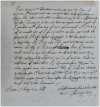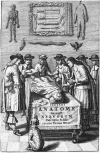On the 400th anniversary of the birth of Thomas Willis
- PMID: 33512447
- PMCID: PMC8105036
- DOI: 10.1093/brain/awab016
On the 400th anniversary of the birth of Thomas Willis
Abstract
Zoltan Molnar marks the 400th anniversary of the birth of one of the great neuroanatomists, Thomas Willis. While Willis’ name is usually associated with ‘the circle’ and the word ‘neurologia’, his work also formed the foundation of modern translational research and clinical medicine.
Figures


Comment in
-
Was this Thomas Willis's greatest clinical success?Brain. 2021 Jul 28;144(6):e56. doi: 10.1093/brain/awab143. Brain. 2021. PMID: 33774668 No abstract available.
References
-
- Hughes JT. Thomas Willis 1621–1675. His life and work. London: Royal Society of Medicine; 1991.
-
- Pears I. An instance of the fingerpost. London: Random House; 1997.
-
- Dewhurst K. Willis' Oxford casebook. Oxford: Sanford; 1981.
-
- Compston A. Dr Thomas Willis’s works: the most learned Christopher Wren and the inward dens of the Brain. 2011. https://history.medsci.ox.ac.uk/seminars/history-of-medical-sciences-sem.... Accessed 22 January 2021.
-
- Compston A. ‘All manner of ingenuity and industry’: a bio-bibliography of Thomas Willis 1621 – 1675. Oxford: Oxford University Press; 2021.
Publication types
MeSH terms
Personal name as subject
- Actions
Grants and funding
LinkOut - more resources
Full Text Sources
Other Literature Sources

